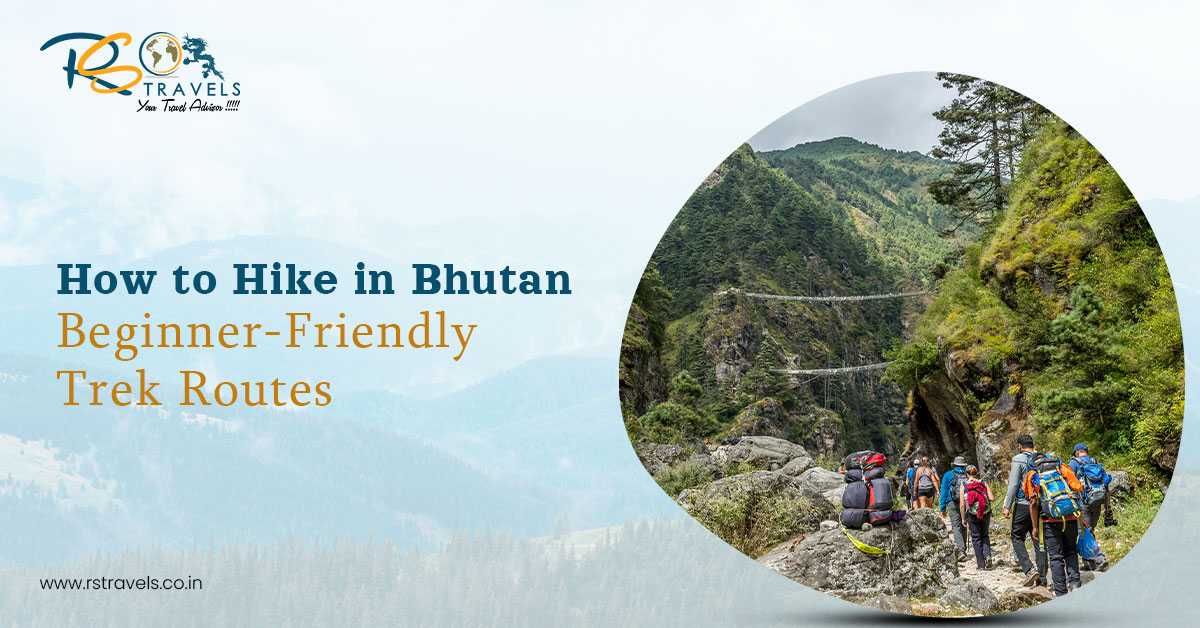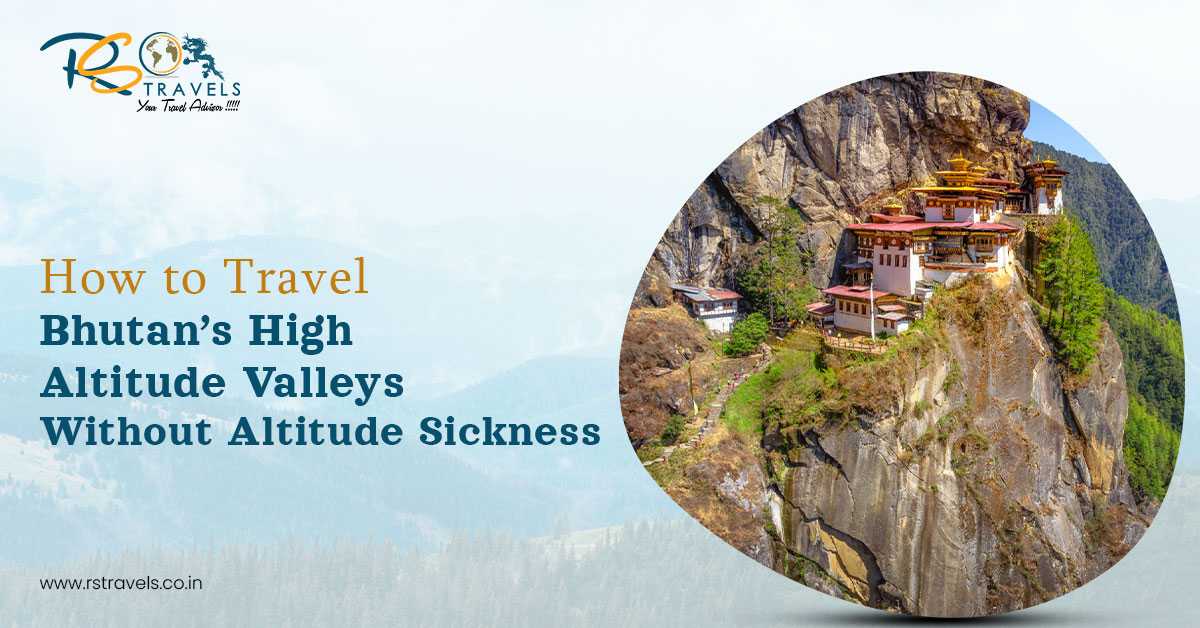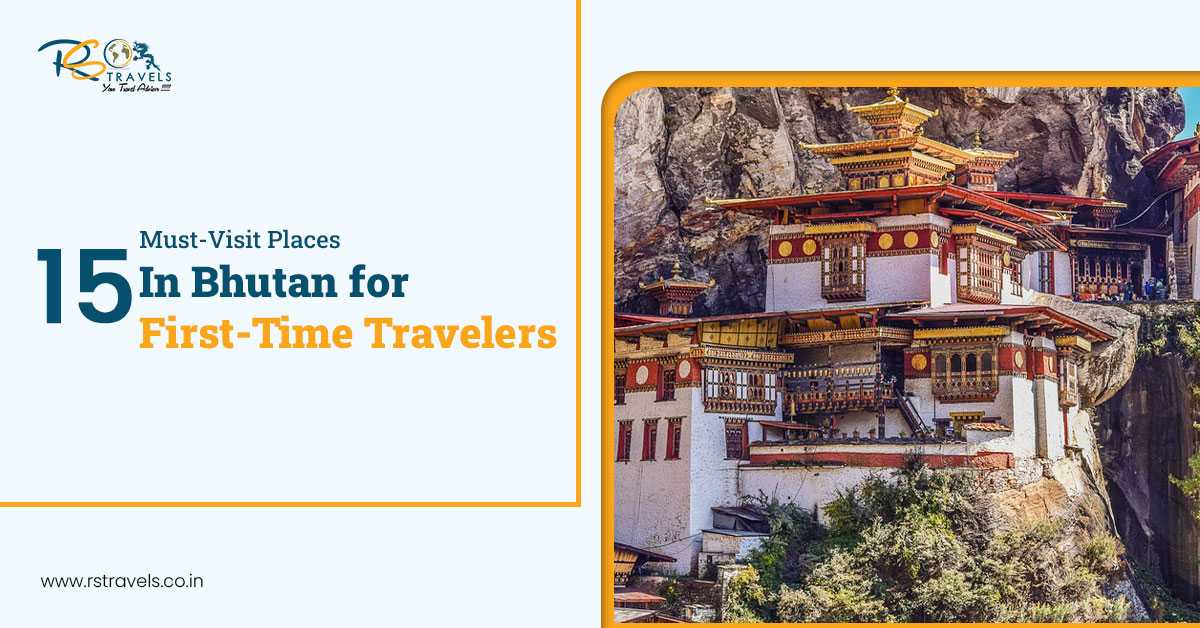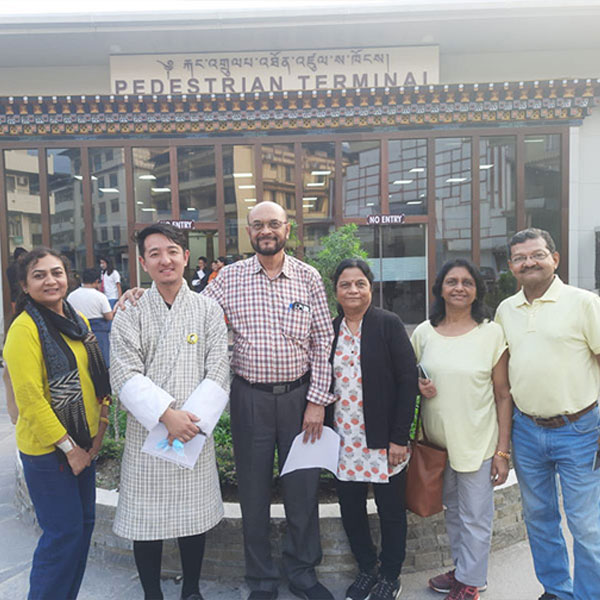For travelers curious to explore beyond the usual, a Bhutan tour operator offers something truly unique. It’s a country where vibrant festivals light up the valleys, prayer wheels spin gently beside rivers, and the air feels cleaner, calmer. But if it’s your first time here, deciding where to go can be tricky. Each region has its flavor, its own story to tell.
Key Facts About Bhutan Every Traveler Should Know
Bhutan, known as the ‘Land of the Thunder Dragon,’ is a unique Himalayan kingdom famous for its stunning landscapes, rich cultural heritage, and commitment to preserving its environment and traditions.
- The country measures progress not just by economic growth but by Gross National Happiness, reflecting the Bhutanese focus on well-being and sustainability.
- The official language is Dzongkha, and the currency used is the Bhutanese Ngultrum (equal in value to the Indian Rupee).
- Bhutan follows a strict policy on tourism to protect its natural beauty and culture, including a Sustainable Development Fee (SDF) for most foreign visitors.
- Travelers should also note that Bhutan drives on the left, and internet access is widely available in urban areas.
Understand these key facts with the help of the leading Bhutan travel agency and prepare better for your trip, concerning the local customs.
15 Places to Visit in Bhutan
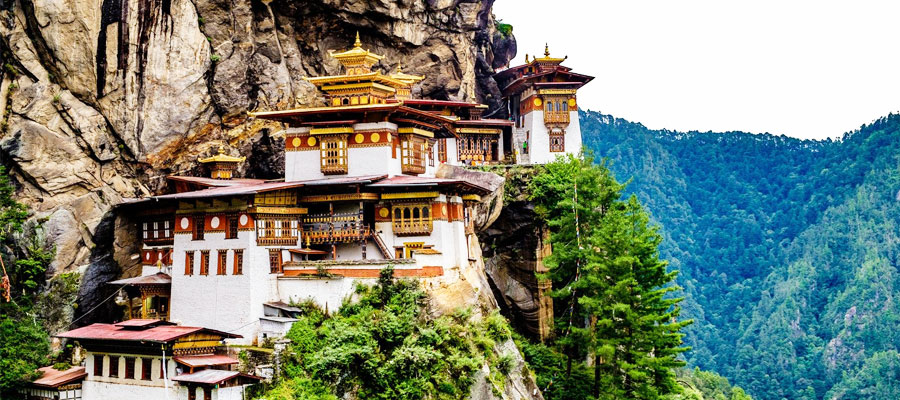
Paro Taktsang (Tiger’s Nest Monastery)
Suspended dramatically on the edge of a cliff, Paro Taktsang is one of Bhutan’s most iconic landmarks. Known as the Tiger’s Nest Monastery, it sits 3,120 meters above sea level and demands a rewarding uphill hike through pine forests and fluttering prayer flags. The monastery is deeply spiritual, built around a cave where Guru Padmasambhava is believed to have meditated.
The story goes that he flew here on the back of a tigress, giving the monastery its legendary name. The moment you reach the top, you're greeted by breathtaking views and a profound sense of peace, which you can relish with a trusted car rental service in Bhutan, so that you can truly rejuvenate in the serenity of the landscape.
| Attribute | Details |
|---|---|
| Location | Paro, Bhutan |
| Best Time to Visit | March - May or September - November |
| Travel Tip | Start the hike early to beat crowds and the sun |
| What to Pack | Trekking shoes, water, and sunblock |
| Nearby Food | Taktsang Cafeteria (halfway point) |
| Landmark | Paro Airport, Paro Dzong, National Museum of Bhutan, Kyichu Lhakhang |
| Activity | Hike to the monastery, watching morning prayers |
| Visit Duration | 5 hours |
The structure itself is a blend of intricate architecture and deep-rooted faith, offering a glimpse into Bhutan's spiritual heritage. For many travelers, this is one of the most unforgettable places to visit in Bhutan, both for its natural beauty and the serenity that envelops it.
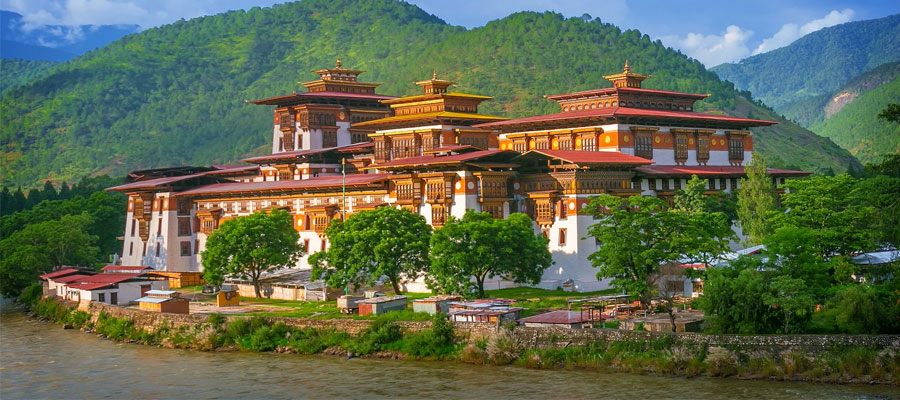
Punakha Dzong
Resting at the confluence of the Pho Chhu and Mo Chhu rivers, Punakha Dzong is often considered the most beautiful fortress in Bhutan. With its whitewashed walls, golden spires, and vibrant courtyards, it’s a stunning example of traditional Bhutanese architecture. The dzong once served as the country’s capital and still plays a vital role during royal ceremonies and major festivals.
Surrounded by blooming jacaranda trees in spring, it feels like a painting comes to life. Inside, you’ll find sacred relics and centuries-old murals that tell the story of Bhutan’s past.
| Attribute | Details |
|---|---|
| Location | Punakha |
| Best Time to Visit | March - April (jacaranda blooms) |
| Travel Tip | Combine with a visit to Chimi Lhakhang |
| What to Pack | Hiking boots with ankle support, sunglasses, and layered clothing |
| Nearby Food | Old Town Cafe Punakha, Merengma Bistro & Bar, and Phendey Restaurant & Bar |
| Landmark | Lobesa Village Restaurant |
| Activity | Hike to Khamsum Yulley Namgyal Chorten, Rafting |
| Visit Duration | 3 hours |
The setting is tranquil, yet its presence is powerful, echoing the spiritual and historical weight it carries. Visiting Punakha Dzong is like stepping into the heart of Bhutanese culture, where beauty and meaning go hand in hand. Among the many places to visit in Bhutan, this riverside marvel remains a favorite for its grace and grandeur.
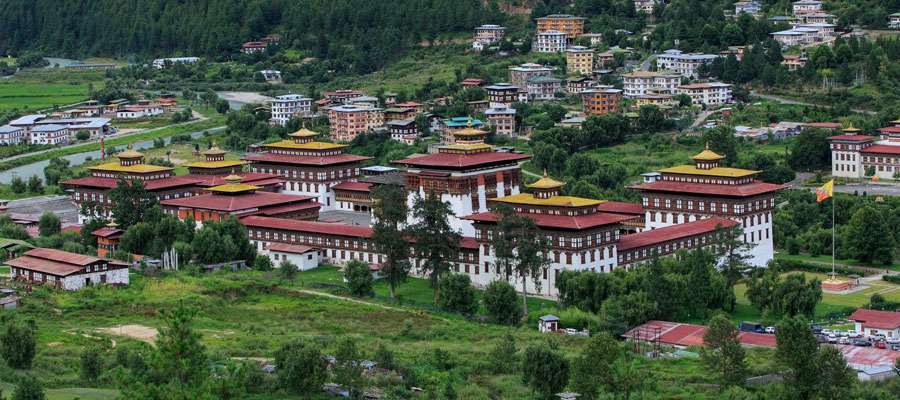
Thimphu City
| Attribute | Details |
|---|---|
| Location | Thimphu |
| Best Time to Visit | March - May or September - November |
| Travel Tip | Visit the weekend market for souvenirs |
| What to Pack | Waterproof jacket, comfortable walking shoes, and an umbrella |
| Nearby Food | Zombala, Ambient Cafe |
| Landmark | Buddha Dordenma, Memorial Chorten, Tashichho Dzong |
| Activity | Hike to Buddha Dordenma, and enjoy nightlife at clubs |
| Visit Duration | 3 days |
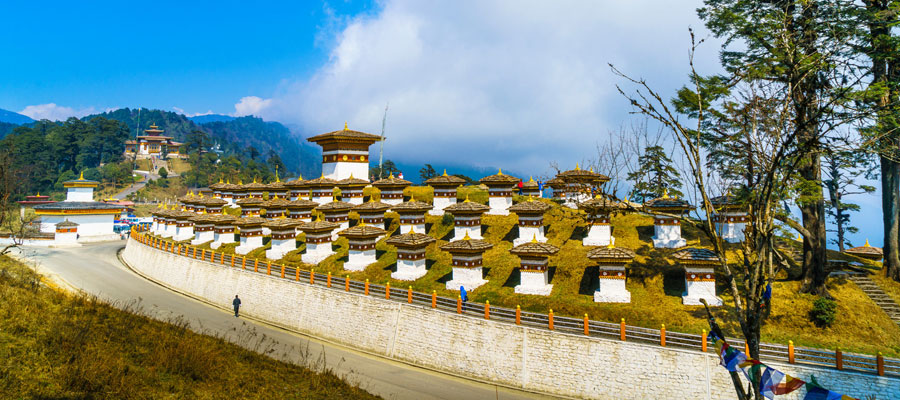
Dochula Pass
| Attribute | Details |
|---|---|
| Location | Dochula Pass |
| Best Time to Visit | October to March |
| Travel Tip | Visit early morning for the Himalayan views |
| What to Pack | Camp shoes, trekking poles, and insect repellent |
| Nearby Food | Dochula Resort Restaurant, The Zone, Dharma Siddhi Restaurant |
| Landmark | Druk Wangyal Lhakhang |
| Activity | Visit the National Memorial Chorten, sightseeing, and picnics |
| Visit Duration | 2 hours |
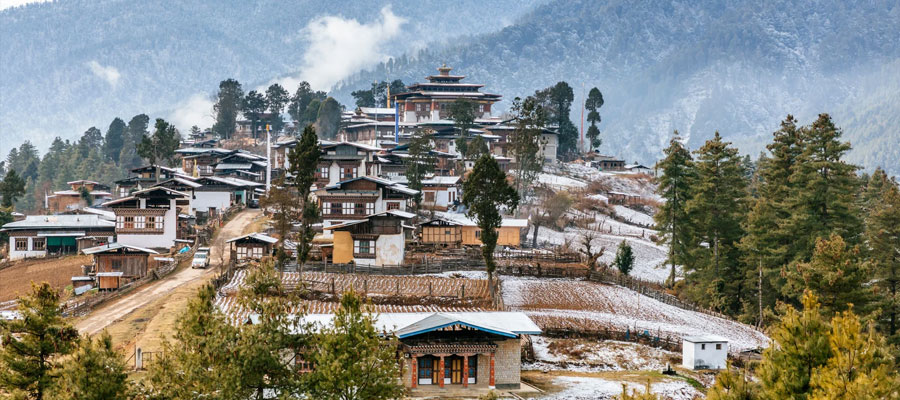
Phobjikha Valley
Peaceful, scenic, and wrapped in clouds, Phobjikha Valley feels like a hidden sanctuary in central Bhutan. Known for its wide glacial plains and surrounding pine-covered hills, this valley is also the winter home of the rare and revered black-necked cranes. Every year, these graceful birds migrate from Tibet, and their arrival is celebrated with joy and reverence by the locals.
| Attribute | Details |
|---|---|
| Location | Phobjikha Valley |
| Best Time to Visit | October to December |
| Travel Tip | Visit Gangtey Monastery and spend 1-2 days exploring the valley |
| What to Pack | Sun protection, warm clothes, hiking shoes, and a poncho |
| Nearby Food | Hotel Kuenphen Norbuding, Gangtey Tent Resort |
| Landmark | Gangtey Monastery |
| Activity | Nature walks, Gangtey Monastery visit |
| Visit Duration | 1-2 days |
Bumthang Valley
Often referred to as the ‘spiritual heartland of Bhutan’, Bumthang Valley is a deeply sacred and culturally rich region made up of four interconnected valleys. Dotted with some of Bhutan’s oldest temples and monasteries, it’s a place where myths, legends, and devotion are part of daily life. The air carries the soft scent of buckwheat fields, apple orchards, and pine forests, and every corner seems to echo with centuries of Buddhist history.
From Jakar Dzong to Kurjey Lhakhang, the valley is filled with sacred landmarks tied to revered saints like Guru Rinpoche. Visitors often feel an instant connection to the land, as if they’ve stepped into a quieter, more meaningful world.
| Attribute | Details |
|---|---|
| Location | Bumthang Valley |
| Best Time to Visit | March-May or September-November |
| Travel Tip | Try local cheese and honey, enjoy trekking, and visit orchards |
| What to Pack | Hiking boots, hats, jackets, and sunscreen |
| Nearby Food | Ajang Yongbha Restaurant, Cafe Perk, Norbu Yangphel Restaurant |
| Landmark | Jambay Lhakhang |
| Activity | Visit the Kurje Lhakhang and the Burning Lake, experience the local festivals, and indulge in the colourful festivals |
| Visit Duration | 3-4 days |
Bumthang is also known for its local cheese, honey, and handwoven wool products (Yathra), which must be included in your Bhutan tour package. Among the many peaceful places, Bumthang offers a perfect blend of spiritual depth and countryside charm.
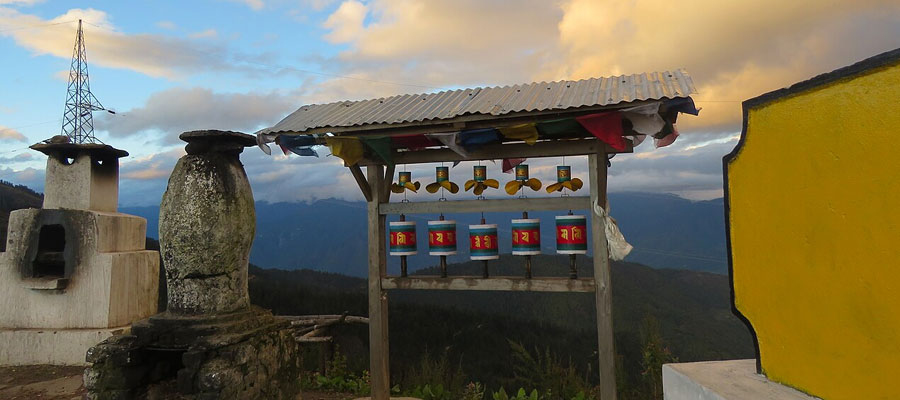
Chele La Pass
| Attribute | Details |
|---|---|
| Location | Chele La Pass |
| Best Time to Visit | October to March |
| Travel Tip | Watch the sunrise on a snow-clad mountain and enjoy birdwatching |
| What to Pack | Down jacket, sturdy hiking shoes, walking poles |
| Nearby Food | Hotel Khayul and Restaurant, Penden, and Namgay Artisanal Brewery |
| Landmark | Haa Valley viewpoint, Mount Jomolhari Viewpoint |
| Activity | Picnic and hike near Paro and Chele La Pass, and explore spiritual sites like Kila Nunnery |
| Visit Duration | Half day |
Among all the scenic places to visit in Bhutan, Chele La Pass stands out for its breathtaking vistas and spiritual atmosphere, offering a sense of freedom that lingers long after you leave.
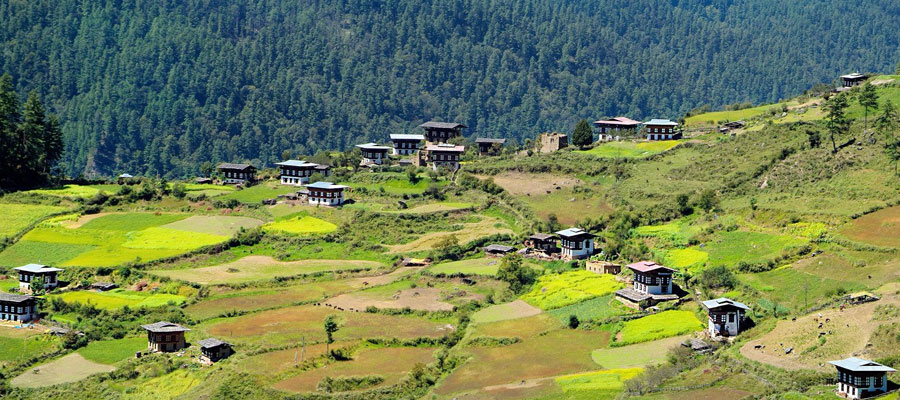
Ha'a Valley
Tucked away in Bhutan’s western region, Haa Valley is one of the least-explored yet most enchanting corners of the country. With its rolling green hills, alpine forests, and charming villages, the valley exudes a sense of timeless peace. Unlike the more frequented areas, Haa has preserved its traditional lifestyle and quiet rhythm. It’s home to sacred sites like Lhakhang Karpo (White Temple) and Lhakhang Nagpo (Black Temple), believed to represent the dual energies of harmony and strength.
Surrounded by majestic peaks, Haa is perfect for cultural immersion and nature lovers alike. The annual Haa Summer Festival offers a unique chance to experience local dances, cuisine, and traditions firsthand, offered by the best Bhutan tour packages from India.
| Attribute | Details |
|---|---|
| Location | Haa Valley |
| Best Time to Visit | April-June or September-November |
| Travel Tip | Explore the traditional villages of Katsho and Yangthang, and try local buckwheat noodles |
| What to Pack | Easy-dry outfits, hiking boots, rain suit |
| Nearby Food | Hoentay Restaurant, Pelden Restaurant, Sonam Trophel Restaurant |
| Landmark | Lhakhang Karpo (White Temple) and Lhakhang Nagpo (Black Temple) |
| Activity | Visit the annual Haa Summer Festival, enjoy birdwatching, and participate in local games like Kuru (Darts) and Dha (Archery) |
| Visit Duration | 1 week |
As you wander through its trails or sit beside its rivers, you'll understand why Haa is considered one of the most soulful places to visit in Bhutan, untouched, authentic, and incredibly serene.
Chimi Lhakhang (Fertility Temple)
| Attribute | Details |
|---|---|
| Location | Chimi Lhakhang |
| Best Time to Visit | March-May or September-November |
| Travel Tip | Wear modest clothes for visiting the sacred site, speak softly inside, and maintain local customs |
| What to Pack | Comfortable walking shoes, a hat, and a breathable dress |
| Nearby Food | Lobesa Village Restaurant and Merengma's Bistro & Bar |
| Landmark | Punakha Suspension Bridge |
| Activity | Enjoy the 30-minute walk through fields from Sopsokha on the main road to Punakha |
| Visit Duration | 1-2 hours |
As one of the most intriguing places to visit in Bhutan, Chimi Lhakhang blends spirituality, folklore, and everyday belief into a truly special experience.
Royal Manas National Park
| Attribute | Details |
|---|---|
| Location | Royal Manas National Park |
| Best Time to Visit | October to March |
| Travel Tip | Make the best of the pleasant weather and good wildlife viewing opportunities led by the local guides |
| What to Pack | Trekking outfit, hat, sunglasses, sunscreen, and binoculars |
| Nearby Food | Hotel Garden, Rinzin Restaurant, Heaven Hotel & Restaurant |
| Landmark | Manas River |
| Activity | Nature walk, bird watching, and wildlife safaris |
| Visit Duration | 3-5 days |
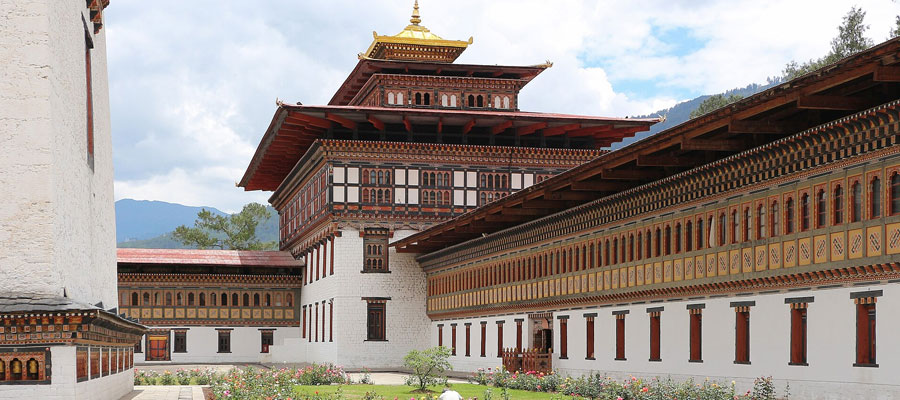
Tashichho Dzong
| Attribute | Details |
|---|---|
| Location | Tashichho Dzong |
| Best Time to Visit | March-May or September-November |
| Travel Tip | Participate in a guided meditation session, explore the architecture, and murals |
| What to Pack | Fleece jacket, sturdy shoes, and camp shoes |
| Nearby Food | Folk Heritage Museum Restaurant, Eatery 108 Restaurant |
| Landmark | Throne Room of the King, and the Monastic Center |
| Activity | Visit the Folk Heritage Museum, Buddha Dordenma, and the National Memorial Chorten |
| Visit Duration | 1-2 hours |
Among the culturally significant places, a trip to the Tashichho Dzong with the best Bhutan DMC in India gives insight into the country’s deep-rooted traditions and its carefully preserved national identity.
Rinpung Dzong
| Attribute | Details |
|---|---|
| Location | Rinpung Dzong |
| Best Time to Visit | March to May |
| Travel Tip | Wear modest clothing, covering arms and legs |
| What to Pack | Windproof clothing, swimwear, if you plan to visit a hot stone bath |
| Nearby Food | Biryani House and Thali, Ama Buffet Restaurant |
| Landmark | Paro Fortress |
| Activity | Attend the annual Paro Tsechu festival |
| Visit Duration | 1-2 hours |
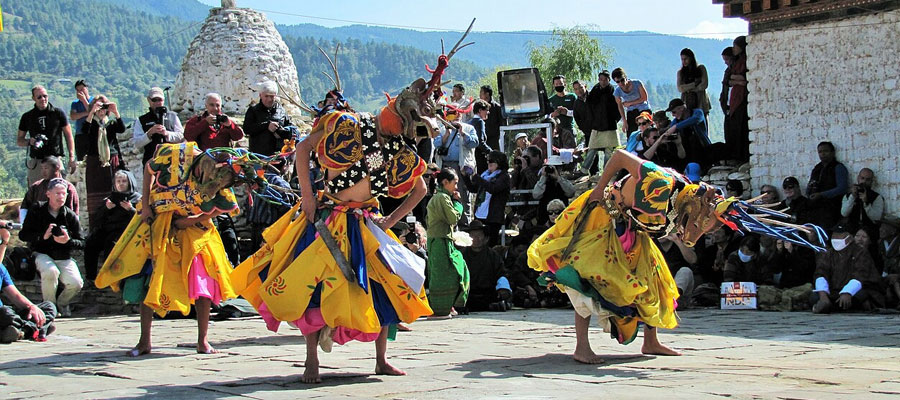
Jambay Lhakhang
| Attribute | Details |
|---|---|
| Location | Jambay Lhakhang |
| Best Time to Visit | September–November |
| Travel Tip | Maintain a low voice, avoid using plastic bags and littering, and take off your shoes before entering the holy site |
| What to Pack | Warm sweater, hiking shoes, aesthetic clothing |
| Nearby Food | Chef Fusion Food (CFF), Subba Restaurant, Pema Dema Restaurant |
| Landmark | One of the 108 temples built by the Tibetan King Songtsen Gampo |
| Activity | Visit the Jambay Lhakhang Drup Festival |
| Visit Duration | 1 day |
Khamsum Yulley Namgyal Chorten
| Attribute | Details |
|---|---|
| Location | Khamsum Yulley Namgyal Chorten |
| Best Time to Visit | March–May or September–November |
| Travel Tip | Hike to the chorten by a 20–30 minute walk along the vast rice paddies |
| What to Pack | Walking stick, light clothing, water bottle, rain gear |
| Nearby Food | Bridge View Restaurant, Merengma' Bistro, Tenphey Bhutanese Cuisine, Raven Restaurant |
| Landmark | Mo Chhu and Pho Chhu rivers |
| Activity | Meditation and Mindfulness Session |
| Visit Duration | 1–1.5 hours |
Motithang Takin Preserve
| Attribute | Details |
|---|---|
| Location | Motithang Takin Preserve |
| Best Time to Visit | March–May or September–October |
| Travel Tip | Early morning visit to the Takins by 9–11 am |
| What to Pack | Comfortable outfit, sunglasses, a hat, and a camera |
| Nearby Food | Takin Cafe, Yangkhil Restaurant, Zombala Restaurant, Four Friends Restaurant, ZaSa |
| Landmark | Sangaygang Viewpoint |
| Activity | Trek through the thick forest and arrange for a picnic |
| Visit Duration | 30 minutes |
Essential Bhutan Travel Tips: Visa, SDF & Safety Guide
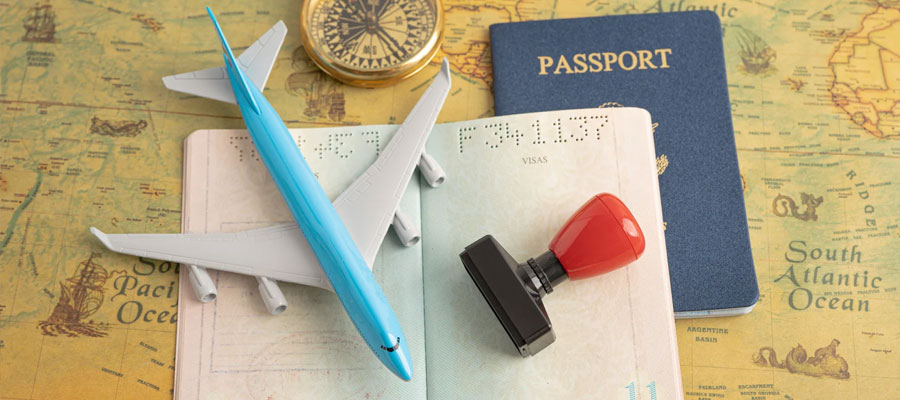
Visa & Entry Permits
- Indian Nationals: Need an entry permit, obtainable at Phuentsholing or Paro. Carry a valid passport or voter ID.
- Other Foreign Nationals: Must obtain a visa through a licensed Bhutanese tour operator or an international partner agency.
- Visa Fee: USD 40, usually included in tour packages.
Sustainable Development Fee (SDF)
- Foreign Nationals: USD 100 per person, per night.
- Indian Nationals: Rs. 1,200 per person, per night.
- Collected by the Bhutanese government to support sustainable tourism.
- Children under 5 are exempt; children 6–12 pay 50%.
Travel Safety & Health Tips
- Roads: Mountain roads can be narrow; always hire experienced local drivers.
- Altitude: Some locations (e.g., Chele La Pass) are at high elevations. Take it slow and stay hydrated.
- Weather: Varies by region and season. Pack layers, rain gear, and sunblock.
- Healthcare: Basic services are available in towns. Carry any personal medications.
Trusted Travel Advice
- Always book your trip through licensed tour operators.
- Carry printed copies of your travel documents and permits.
- Use local SIM cards or eSIMs for connectivity.
- Respect local customs, dress modestly, and ask before photographing monks or religious sites.
Local Places to Eat in Bhutan: Must-Try Restaurants & Foods
Best Restaurants in Key Locations:
Paro
- Sonam Trophel Restaurant - Popular for authentic Bhutanese dishes and generous portions.
- My Kind of Place - Cozy café serving momos, soups, and homemade cakes.
- Brioche Café - Great coffee, pastries, and breakfast with Paro street views.
- Yue-Ling Restaurant - Traditional Bhutanese meals with lovely mountain ambiance.
Punakha
- Chimi Lhakhang Cafeteria - Local meals near the famous fertility temple.
- Dochula Resort Restaurant - Scenic views with traditional and Indian cuisine.
- Punakha Pizza - Wood-fired pizzas with local twists and ingredients.
- Zhingkham Resort Dining - Upscale Bhutanese and continental dishes with valley views.
Thimphu
- Ambient Café - Friendly vibe with coffee, pancakes, and Wi-Fi.
- Zombala 2 Restaurant - Famous for juicy beef momos and local flavors.
- The Zone - Bhutanese-Western fusion with craft beer and lively ambience.
- Babesa Village Restaurant - Traditional wooden house offering heritage-style meals.
Dochula Pass
- Dochula Cafeteria - Quick local meals with panoramic mountain views.
- Druk Wangyel Cafe - Cozy stopover for tea and hot snacks.
- The Viewpoint Cafe - Simple menu with unbeatable views of 108 chortens.
- Mountain Café - Basic setup for hot drinks and light bites.
Phobjikha Valley
- Noryang Restaurant - Home-cooked food with valley views and warmth.
- Dewachen Hotel Restaurant - Bhutanese and continental dishes in a rustic setting.
- Yue-Loki Restaurant - Local meals with organic vegetables and yak cheese.
- Gangtey Lodge Dining Room - Fine dining with a view of black-necked crane habitats.
Bumthang Valley
- Swiss Guest House Restaurant - Swiss-Bhutanese fusion with apple cider and cheese.
- Jakar Village Lodge Dining - Fresh farm-to-table meals and local wines.
- Chumey Nature Resort Restaurant - Traditional dishes with warm wooden interiors.
- Mountain Lodge Cafe - Light snacks and tea for trekkers and explorers.
Chele La Pass
- Pass View Cafe - Hot drinks and noodles at Bhutan’s highest motorable point.
- Chorten Café - Small eatery offering tea, snacks, and shelter from the cold.
- Haa Roadside Kitchen - Simple Bhutanese meals with valley views.
- Snowline Café - Momos and soups with scenic stopover charm.
Haa Valley
- Ugyen Homestay Dining - Local cooking served in a traditional Haa home.
- Risum Resort Restaurant - Offers cozy ambiance and organic Bhutanese dishes.
- Lhakhang Karpo Kitchen - Local eatery near the white temple, serving authentic meals.
- Yangthang Heritage Lodge - Set-menu Bhutanese cuisine in a historic farmhouse.
Chimi Lhakhang (Fertility Temple)
- Chimi Lhakhang Cafeteria - Popular post-visit spot for lunch and refreshments.
- Lobesa Village Restaurant - Homemade Bhutanese dishes near rice terraces.
- Punakha Eco Lodge Dining - Simple and sustainable local meals.
- Dragon’s Nest Restaurant - Peaceful riverbank dining with local flavors.
Royal Manas National Park
- Gelephu Eco Cafe - Fresh juices and light meals near the forest zone.
- Manas Jungle Retreat Dining - Eco-friendly dining with local organic ingredients.
- Tingtibi Lodge Restaurant - Hearty meals for wildlife watchers and hikers.
- Green Forest Cafe - A Tea and snacks stop for forest tourists.
Tashichho Dzong
- Cafe Luna - Great coffee and sandwiches after a dzong visit.
- Folk Heritage Restaurant - Traditional meals served with cultural décor.
- Bhutan Kitchen - Buffet-style Bhutanese dishes close to central Thimphu.
- Yangchenma Cafe - Small café with sweets, tea, and relaxed ambiance.
Rinpung Dzong
- Tenzin Cafe - Momo and thukpa hotspot near the dzong entrance.
- Champaca Cafe - Warm drinks, views, and light snacks post-dzong walk.
- Hotel Olathang Restaurant - Elegant meals with Bhutanese and continental options.
- Authentic Bhutanese Restaurant - Traditional setup with homestyle cooking.
Jambay Lhakhang
- Megha Cafe - Homely space for tea and light meals near the temple.
- Jakar Restaurant - Bhutanese buffet close to sacred sites.
- Chakar Lodge Dining - Offers regional specialties in a heritage building.
- Tibetan Restaurant - Great for noodle soups and local dumplings.
Khamsum Yulley Namgyal Chorten
- Khamsum Cafe - Light meals and drinks near the hiking base.
- Sonam Cafe - Local lunch stop surrounded by paddy fields.
- River Valley Cafe - Tea and snacks with stunning valley views.
- Punakha Riverside Eatery - Relaxing spot post-hike with Bhutanese specialties.
Motithang Takin Preserve
- O’ Cafe - Vegetarian-friendly café near the preserve with mountain views.
- Cafe at Takin Park - Tea, coffee, and momos near the enclosure.
- Seasons Restaurant - Ideal for lunch with Bhutanese-Continental variety.
- The Thimphu Kitchen - Elegant restaurant offering Bhutanese flavors close to nature spots.
.jpg)
Must-Try Dishes in Bhutan
- Ema Datshi - Spicy chilies and cheese, Bhutan’s national comfort food.
- Kewa Datshi - Potatoes cooked in cheese, perfect for a warm meal.
- Shamu Datshi - Mushrooms in creamy cheese sauce, earthy and satisfying.
- Phaksha Paa - Pork cooked with radish and chilies, bold and hearty.
- Jasha Maru - Spiced chicken stew with onions, tomatoes, and herbs.
- Suja (Butter Tea) - Salty butter tea, ideal for mountain mornings.
- Momos - Steamed dumplings filled with meat or cheese, widely loved.
- Red Rice - Nutty, semi-sticky rice grown in Bhutan’s highlands.
- Goen Hogay - Cucumber salad with chili, coriander, and fermented cheese.
- Zow Shungo - Rice mixed with leftover vegetables, light and filling.
Understanding Bhutanese Customs & Traditions
Cultural Etiquette:
- Dress modestly: Especially at monasteries and dzongs. Shoulders and knees should be covered.
- Shoes Off Indoors: Remove footwear before entering temples or homes.
- No Pointing at Sacred Objects: Use your full hand or gesture subtly.
Religious Practices:
- Spin prayer wheels clockwise.
- Walk around stupas in a clockwise direction.
- Do not climb on religious monuments or touch relics.
Festivals to Experience:
- Tshechus: Colorful masked dance festivals held annually in every district. Most popular: Paro and Thimphu Tshechu.
- Losar: Bhutanese New Year, celebrated in winter with traditional food and rituals.
Frequently Asked Questions
Q. What currency is used in Bhutan?
Answer: The Bhutanese Ngultrum (BTN) is the official currency and is pegged to the Indian Rupee (INR), which is also widely accepted
Q. Do I need a visa to visit Bhutan with a travel agency?
Answer: Most foreign nationals require a visa arranged through a licensed Bhutanese tour operator. Indian nationals need an entry permit available at border points.
Q. What is the Sustainable Development Fee (SDF)?
Answer: The SDF is a daily fee charged to foreign tourists to support Bhutan’s sustainable tourism policies, currently $100 per night.
Q. What language is spoken in Bhutan?
Answer: Dzongkha is the official language, but English is commonly used in tourism and business.
Q. How physically demanding is a trip to Bhutan?
Answer: Most sites are accessible with moderate walking, though some, like Tiger’s Nest, require steep hikes. With proper planning and pacing, even older travelers can comfortably enjoy all the places to visit in Bhutan.
Q. Are vegetarian food options available near tourist spots?
Answer: Yes, vegetarian meals are easy to find throughout Bhutan. Restaurants near tourist areas often serve vegetable momos, red rice, dal, and Ema Datshi without meat, making it suitable for vegetarian or Jain travelers.
Q. Is English spoken at Bhutanese tourist destinations?
Answer: Yes, English is widely spoken, especially by guides, hotel staff, and vendors in tourism areas. Communication is generally smooth, helping travelers better understand the local culture and navigate their trip comfortably.
Q. Can I visit monasteries during local festivals or rituals?
Answer: Absolutely. Visiting during festivals like Tshechu allows you to witness masked dances, prayers, and traditional attire. It’s one of the best cultural experiences you can have while exploring the spiritual side, with the best taxi services in Bhutan.
Q. Which is the most iconic place in Bhutan for photography?
Answer: Paro Taktsang (Tiger’s Nest) is among the many beautiful places to visit in Bhutan. Perched on a cliff, it offers breathtaking views and a spiritual aura that attracts travelers and photographers alike for unforgettable shots of Bhutan’s unique architectural wonder.
Q. Do I need a guide for all the best places to see in Bhutan?
Answer: Yes, Bhutanese tourism policy requires foreign tourists to be accompanied by a licensed guide. This enhances your experience and ensures you understand the culture, history, and traditions at each site without missing valuable insights.

